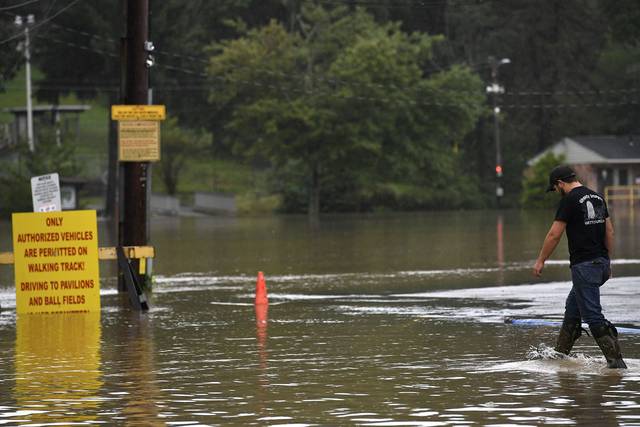https://triblive.com/local/westmoreland/westmoreland-conservation-district-will-host-qa-sessions/
Westmoreland Conservation District will host Q&A sessions Tuesday, Wednesday

Last year, one of the Westmoreland Conservation District’s rain gauges measured 72 inches of total rainfall — far above the typical 40 to 45 inches that the region sees annually.
“It really brought home the stormwater issues we have,” said Kathy Hamilton, stormwater technician and landscape architect at the conservation district. “It made the bad issues worse, and in some places, it happened multiple times.”
Conservation district officials will host two question-and-answer sessions Tuesday and Wednesday, Feb. 19 and 20, regarding the county’s Integrated Water Resources Plan. The plan was developed over the past two years with an eye toward managing and mitigating Westmoreland’s stormwater issues.
The plan will become part of the county’s update of its overall comprehensive plan, which sets out goals and serves as a vision for development and land use.
The draft plan was completed late last year, and a printed copy was delivered to every municipality in the county for public review over the past month or so.
“The plan has to be accepted by the county, and then it has to go to the (state’s Department of Environmental Protection) for approval to meet (state-mandated) stormwater requirements,” Hamilton said.
A large part of the study, funded by a $350,000 grant from the Richard King Mellon Foundation, looked at heavily developed areas of the county where stormwater runoff is likely to carry more sediment and pollution into local waterways.
“We were able to identify some of the ‘hot spots’ in the county where projects can be targeted, and where we can try and find places to apply some of the grant funding we’ll pursue,” Hamilton said.
Examples of “hot spots” include places like Irwin, Jeannette and heavily developed parts of Murrysville, “places where you have a lot of development, and streams that are impacted by runoff from that development,” Hamilton said.
Communities subject to the state’s municipal separate stormsewer system, or MS4, regulations, are required to develop a stormwater ordinance.
“The plan sort of serves not only as a one-stop shop for anyone looking to do development in the county, but also as a model stormwater ordinance for municipalities,” Hamilton said.
Some flexibility was built into the model ordinance so that more-urban areas like Greensburg and Jeannette can set parameters “that work for them, as opposed to a place like Bell Township which is more rural and won’t have the same sorts of issues,” Hamilton said.
The full plan is available online at WestmorelandStorm Water.org.
Question-and-answer sessions are set for 6 p.m., Tuesday, Feb. 19 and 3 p.m., Wednesday, Feb. 20, at the J. Roy Houston Conservation Center, 218 Donohoe Road, Hempfield.
[NOTE: A previous version of this story listed the Q&A dates incorrectly.]
Copyright ©2025— Trib Total Media, LLC (TribLIVE.com)
